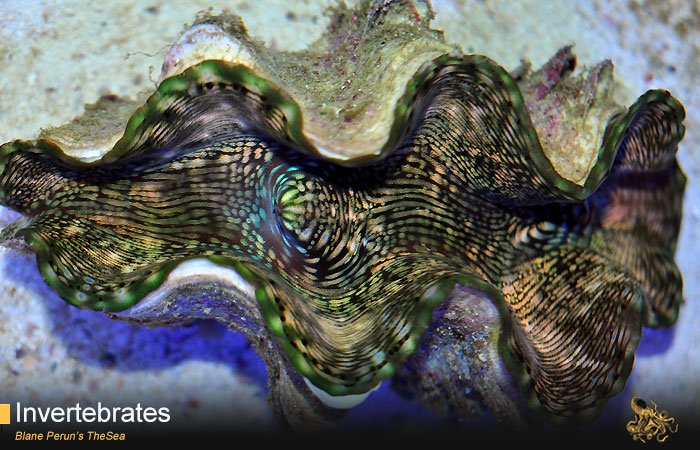Squamosa Clam
The squamosa clam, also known as the scaly clam or the fluted giant clam is among the largest and hardiest species of clams known today. Common from the coasts of Africa, throughout the Indo-Pacific and all the way from the costs of Japan to Australia, squamosal clams are adaptable creatures, able to survive in various shallow water environments from coral reefs to walls, from reef flats to lagoons.
Squamosa clams grow to measure up to 40 cm in diameter. One of the physical features that distinguishes them from other giant clam species is the fluted and fan-like appearance of the shell. The mantle is usually colorful, variations ranging from brown and green to purple and yellow, with spots or linear patterns, but there are individuals that have a mantel of a uniform or striped bright blue color. The mantle is thick, fleshy and large enough to cover the entire shell when fully extended. Squamosa clams have a special organ called a byssus that protrudes from the shell and is used by the animal to attach itself to rocks, corals or to the sandy substrate. The byssus secretes a liquid that hardens and fastens the clam securely.
The clam lives in symbiosis with zooxanthellae algae that provide it with valuable nutrients such as carbs and glucose from the waste they produce during photosynthesis. If conditions are optimal, the algae multiply endlessly, which prompts the clam to consume some of them integrally, maintaining the algae population constant inside its tissues. In addition, squamosal clams obtain nutrients with the help of a specialized organ on the mantle that extracts phosphates, ammonia and nitrates from the water and they also filter the water with their gills, extracting food particles.
These creatures are protandry clams, meaning that they are all born male, some of them becoming female at a later stage of development. Fertilization happens externally, the males releasing their sperm and the females releasing their eggs into the water. The fertilized eggs hatch into trocophore larvae, swimming freely until they reach the next stage of development, the veliger stage when the larvae already look like tiny clams. It is at this stage that juvenile squamosa clam individuals start looking for a spot of substrate or a coral on the reef where they can anchor themselves to.



